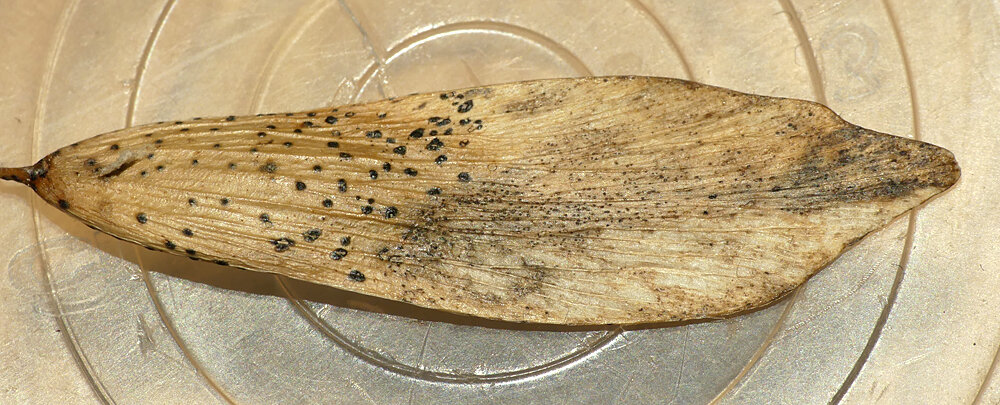March 2021
/White Storks - Petites Vallees, Talbot Valley, 21 Mar 21
After the excitement of the Bonaparte’s Gull, the rest of the winter was unlikely to produce anything in a similar league and it was just a case of holding firm until the first spring migrants arrived. I saw the aforementioned Bonaparte’s Gull in the same place on 21st February but I recorded literally no other sightings during the rest of the month - mainly due to rarely leaving the house due to lockdown.
Barely a week into March I managed to find the first taste of the summer when we went for a family walk at the Reservoir on 6th. Immediately I saw a hirundine hawking over the dam and presumed it was to be my first Sand Martin of the year, but it soon swooped low to reveal a white rump patch - it was a very early House Martin. The 6th March would be even quite early for Sand Martin to arrive but is quite exceptional for House Martin - I can only find two earlier sightings in the Guernsey database, both (quite recent) February records, so this was very notable. A singing Firecrest was noted near the SW corner of the lake.
House Martin - Reservoir, 6 Mar 21
House Martin - Reservoir, 6 Mar 21
By now we were back in the classroom and getting out and about more and a few days later a group of five Mute Swans appeared on the island - unprecedented numbers for Guernsey! I didn’t rush down the west coast to see them but was very much more interested when a message came through at work on 12th March that two of these birds had decided to drop in on Pulias Pond, the epicentre of my local patch. These would be a patch lifer for me but I had no expectations of them still being there when I drove past on the way home since it is a popular “dog-walking-past-the-pond-and-scaring-off-birds” spot. However, pulling into the adjacent car park at about half-three, they were indeed still there. What a couple of beauts! Species number 166 for the 3 mile strip of coastline that I call my “patch”.
Mute Swans - Pulias, 12 Mar 21
Mute Swans - Pulias, 12 Mar 21
Mute Swan - Pulias, 12 Mar 21
Mute Swan - Pulias, 12 Mar 21
Out driving on 14th March, I again saw the Bonaparte’s Gull in the same spot as it was first seen. This bird has now been present here for over a month. There was a fine drake Red-breasted Merganser in Perelle also which I stopped briefly to see. On 16th March I saw my first very obvious migrant Chiffchaffs, with three birds feeding in the lee of the wind round the small pond behind the Peninsula. Most years, this is where I see the first of these, often perching n the fence like in the pic below.
Bonaparte’s Gull - L’Eree, 14 Mar 21
ChifFchaff - Rousse, 16 Mar 21
Late in the evening on 20th March, a photo was put up on on the local facebook group showing a pair of White Storks perching at the top of a dead tree in the middle of the island, taken late in the afternoon. I did consider getting up at first light to search for them but then decided I was actually quite tired and would let other people do the donkey work. So, waking up quite relaxed, at 8-ish I saw that they had in fact been relocated and pinned down in a field near the Talbot. This was quite handy as we were about to head off on a cliff walk and so I diverted from the family on the way there to take these birds in. They were exactly where they were supposed to be and so I stopped the car in the middle of the road and took a few snaps - didn’t even need to get out! As I had seen lots of White Storks on my European trips in the last few years, I had forgotten how rare they are still on Guernsey, this being just the 12th record ever. These birds are only my second sighting here after 3 birds were present in the same area in 2000.
White Storks - Petites Vallees, Talbot Valley, 21 Mar 21
White Storks - Petites Vallees, Talbot Valley, 21 Mar 21
White Storks - Petites Vallees, Talbot Valley, 21 Mar 21
We carried on for our walk from Bluebell Woods to Fermain and had three different singing Firecrests - they are becoming so common nowadays. There wasn’t any Chiffchaffs singing which was a surprise but I did get to visit the “Pepperpot” overlooking the North side of Fermain which I had never been to before - presumably a marker for shipping.
Green Alkanet - Fermain, 21 Mar 21
The Pepperpot, Fermain, 21 Mar 21
inside the Pepperpot
Despite the general consensus that Twitter is a cesspool of disgustingness, I think people need to be more selective about who they follow and what they read. My timeline regularly gives me little nuggets of information about the natural world which I would never have ever known about otherwise. Below is an Ash key which I picked up at the Reservoir because I had seen a twitter post about microfungi. There are two species here - Diaporthe samaricola (larger black dots near the base of the seed), and Neosetophoma samarorum (very small black dots in discoloured areas of the key).
Ash key microfungi - Reservoir, 6 Mar 21
















